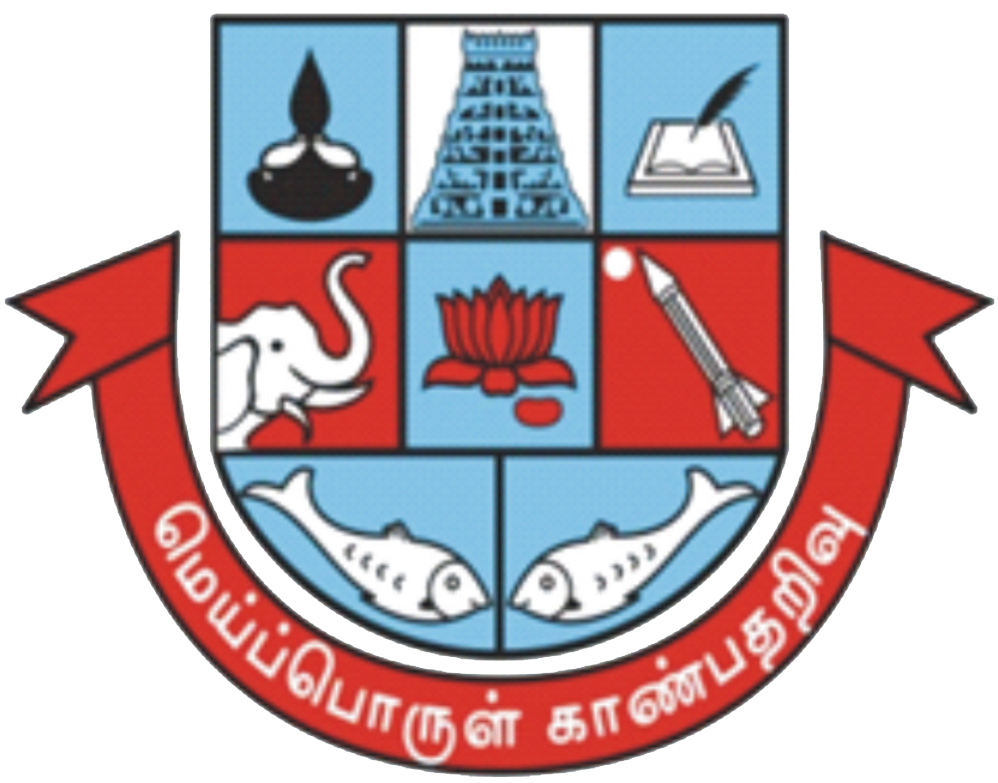About Us |
| The seed for the School of Physics of Madurai Kamaraj University was sown with the establishment of the department of physics in the post graduate extension centre of the University of Madras in 1962. |
|
| This department was upgraded to School of Physics in 1976. The school has four constituent departments: Physics, Theoretical physics, Computational Physics and Laser Studies. Thrust area of the school is Condensed Matter Physics. In School of Physics, three programs are offered under the CBCS. They are M. Sc Physics, M. Phil Physics and Ph. D in Physics. The school upholds the great ideals and its objectives. Academic programmes upto a great extent are in line with the university’s best goals and curricula. |
|
| The school is striving to be at the forefront of higher education and research in Physics. The major research facilities are CAD-4 Automatic X-ray Diffractometer for single crystal studies, Micro/ Macro Raman Spectrometer, Powder X-ray diffractometer, High performance computing cluster, UV spectrophotometer, Spectrofluorimeter, Electro Chemical Workstation, Atomic Force Microscopy etc. |
|
| To enhance talent and skills of the post graduate students and to meet the emerging challenges and demands of the century, new papers are introduced as electives in the syllabus in the present academic year. The papers are Advanced Computational Physics, Nano Physics, Optoelectronics and Introductory Particle Physics (in collaboration with INO). To add lustre to the golden phases of its history, recently School of Physics is awarded by the DSA programme. |
Moto
![]() Research-intensive education in the physical sciences
Research-intensive education in the physical sciences
Vision
![]() School of Physics shall endeavor to move forward the frontiers of human knowledge, enrich and elevate the citizens of the state, and thus the nation by
School of Physics shall endeavor to move forward the frontiers of human knowledge, enrich and elevate the citizens of the state, and thus the nation by
![]() Disseminating knowledge through innovation in research and learning
Disseminating knowledge through innovation in research and learning
![]() Focusing on comprehensive research projects to contribute to humanity and to enhance the society in meaningful ways.
Focusing on comprehensive research projects to contribute to humanity and to enhance the society in meaningful ways.
Mission
![]() A value driven global-level higher education in Physics through interdisciplinary approach for undertaking and promoting research and development
to meet the changing needs of society.
A value driven global-level higher education in Physics through interdisciplinary approach for undertaking and promoting research and development
to meet the changing needs of society.
Teaching innovations
![]() Using creative tools to stimulate imagination and to identify the potentials of young students
Using creative tools to stimulate imagination and to identify the potentials of young students
![]() Incorporating audio-visual materials to supplement textbooks with models, filmstrips, movies and pictorial materials.
Incorporating audio-visual materials to supplement textbooks with models, filmstrips, movies and pictorial materials.
This not only develop the listening ability, but will also help in better understanding of concepts.
![]() Enrich classroom learning with real time examples, will make the learning cake-walk for the students.
Enrich classroom learning with real time examples, will make the learning cake-walk for the students.
![]() Introducing brainstorming sessions into the classrooms to pool multiple brains on a single concept providing a great platform for students to voice their thoughts
Introducing brainstorming sessions into the classrooms to pool multiple brains on a single concept providing a great platform for students to voice their thoughts
(simple brainstorming or group brainstorming or paired brainstorming)
![]() Sometimes classes are taken outside the classroom, organize field trips to have a real time learning
Sometimes classes are taken outside the classroom, organize field trips to have a real time learning
![]() Role play is more effective for students of all age group. It only needs to be customized depending on the group – helps the student to step out of
Role play is more effective for students of all age group. It only needs to be customized depending on the group – helps the student to step out of
their comfort zone and develop their interpersonal skills
![]() Result of collaborative efforts is tapped effectively by spending some quality time with colleagues to come up with interesting strategies
Result of collaborative efforts is tapped effectively by spending some quality time with colleagues to come up with interesting strategies
![]() Groups are formed among students so that they get enough time to work on interesting topics they are passionate about
Groups are formed among students so that they get enough time to work on interesting topics they are passionate about
The School Consists of the following Four Department
- Department of Computational Physics
- Department of Laser Studies
- Department of Physics
- Department of Theoretical Physics
Programmes in the School
- M. Sc. Physics.
- M.Phil Physics.
- Ph.D Physics.
S.NO |
ITEMS |
2007-12 |
2012-17 |
Total |
|
1 |
Ph. D. awarded |
29 |
28 |
57 |
|
2 |
Ongoing Number of Ph.Ds in the School |
- |
- |
27 |
|
3 |
M.Phils awarded |
99 |
90 |
189 |
|
4 |
Papers published |
210 |
265 |
475 |
|
5 |
Cumulative |
- |
- |
- |
|
6 |
Book chapters |
- |
- |
4 |
|
7 |
Book (Co-authored) |
- |
- |
3 |
|
8 |
Patents |
- |
- |
- |
|
9 |
No. of Projects |
8 |
9 |
17 |
|
